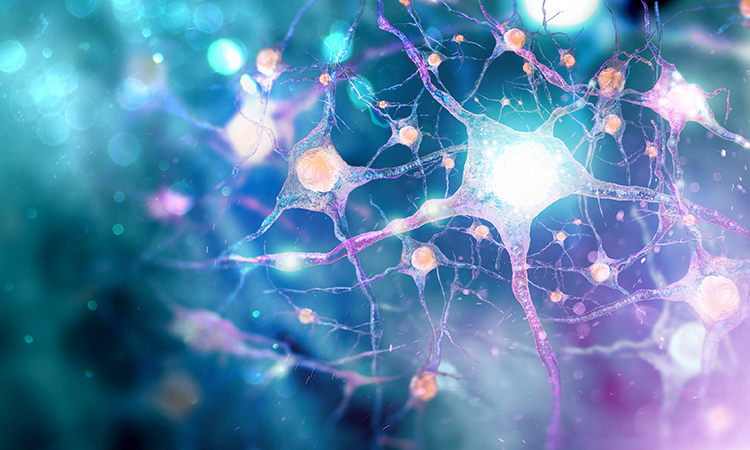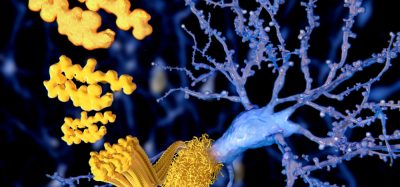Brain cells found to transfer material to neurons in mice
Posted: 21 April 2023 | Taylor Mixides (Drug Target Review) | No comments yet
Researchers have discovered that oligodendrocyte-lineage cells transfer cell material to neurons in a mouse brain. They have provided the first evidence of coordinated nuclear interaction between these cells and neurons.

In a study published in the Journal of Experimental Medicine researchers from University of California – Davis Health, US, have revealed how a particular type of brain cell, called oligodendrocyte-lineage cells, transfers cell material to neurons in the mouse brain. The researchers have provided the first evidence of coordinated nuclear interaction between these cells and neurons.
“This novel concept of material transfer to neurons opens new possibilities for understanding brain maturation and finding treatments for neurological conditions, such as Alzheimer’s disease, cerebral palsy, Parkinson’s, and Huntington’s disease,” said corresponding author Olga Chechneva. Assistant Project Scientist at the UC Davis Department of Biochemistry and Molecular Medicine.
The definition of oligodendrocyte-lineage cells
Oligodendrocyte-lineage cells are a type of glial cell that can be found in the central nervous system. These cells are important for supporting the maturation of neural circuits from the time of birth. One of the main functions of oligodendrocyte-lineage cells is myelination, which involves creating a protective insulating layer called the myelin sheath around the nerve axons.
Satellite oligodendrocytes are a unique type of oligodendrocyte present in the grey matter of the central nervous system, near neuronal bodies. They play various roles, such as promoting the survival of neighbouring neurons, regulating the release of neurotransmitters, and adjusting synaptic activity.
“Research has mostly focused on studying the myelinating function of oligodendrocytes, while satellite oligodendrocytes and their interaction with neurons are not well understood,” Chechneva said.
A new discovery became possible due to an unexpected observation
The process of observing the interaction between glial cells and neurons began with an unplanned discovery. The scientists used unique fluorescent proteins to mark and follow the oligodendroglia in the brain and spinal cord of mice. To their surprise, they noticed that nuclear and ribosomal reporter proteins were not only found within these cells but also in the neurons of the mouse model.
Open borders for material transfer
Protein and molecule transfer is vital for neuronal survival and recovery post-injury. Material transfer occurs through tunnelling nanotubes, gap junctions, and extracellular vesicles. This study is the first to report material transfer to neurons by satellite oligodendrocytes in close contact with neurons, despite the interrupted plasma membrane.
“We are looking at the possibility of an additional new mechanism where the cell can directly transfer material to another cell, in particular a satellite oligodendrocyte to a neuron. We could clearly see that cell nuclei from both cells had come together, and the plasma membrane (the physical border between cells) was open,” Chechneva explained.
Investigating the transfer mechanism as a potential therapy for neurodegenerative diseases
The study revealed that the transfer of materials between oligodendroglia and neurons starts to occur after birth, during a crucial time of brain development.
“The fact that this transfer process is established during postnatal development is very interesting. These are critical periods when the brain is maturing and brain circuits are formed,” Chechneva said.
“Our knowledge about this mechanism is extremely new, and it opens many questions for understanding how neurons work and its biological relevance in many neurological disorders. This is very exciting,” Chechneva added.
In addition to the above findings, the researchers observed that material transfer from oligodendroglia to neurons is heightened during chronic neuroinflammation. This discovery presents a potential avenue for developing more targeted therapies for neurodegenerative conditions that result from the accumulation of pathogenic proteins in neurons, including Alzheimer’s and Parkinson’s disease.
Related topics
Cell Therapy, Drug Delivery, Drug Discovery, Drug Discovery Processes, Drug Targets, In Vivo, Neurons, Neurosciences
Related conditions
Alzheimer's, Parkinson's
Related organisations
UC Davis Health, University of California (UC)
Related people
Olga Chechneva







